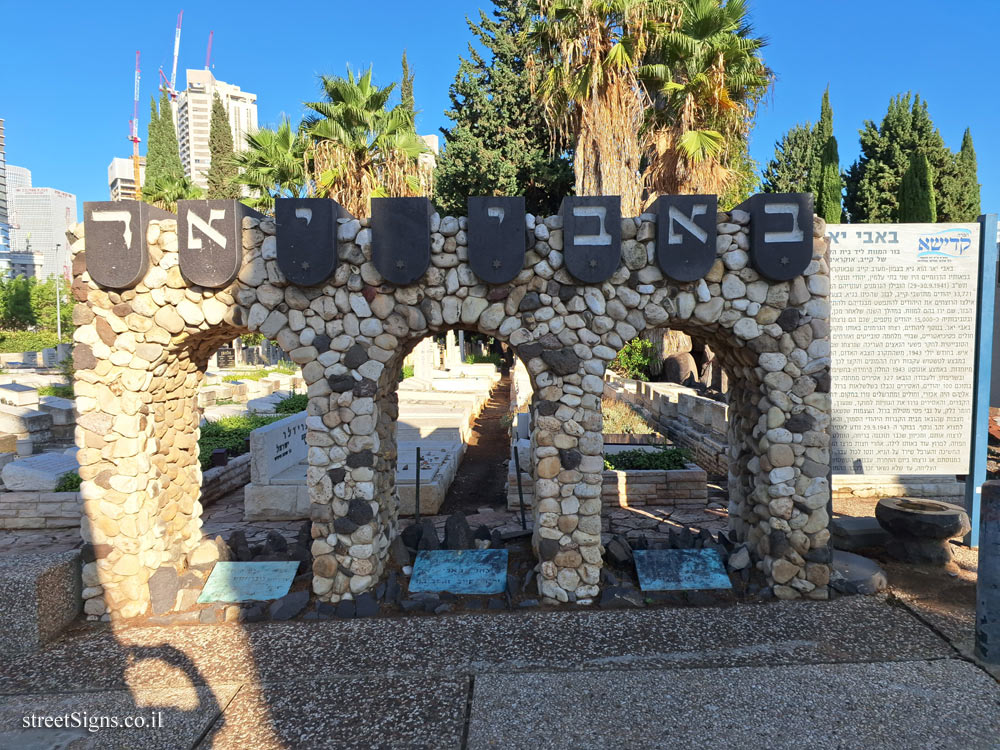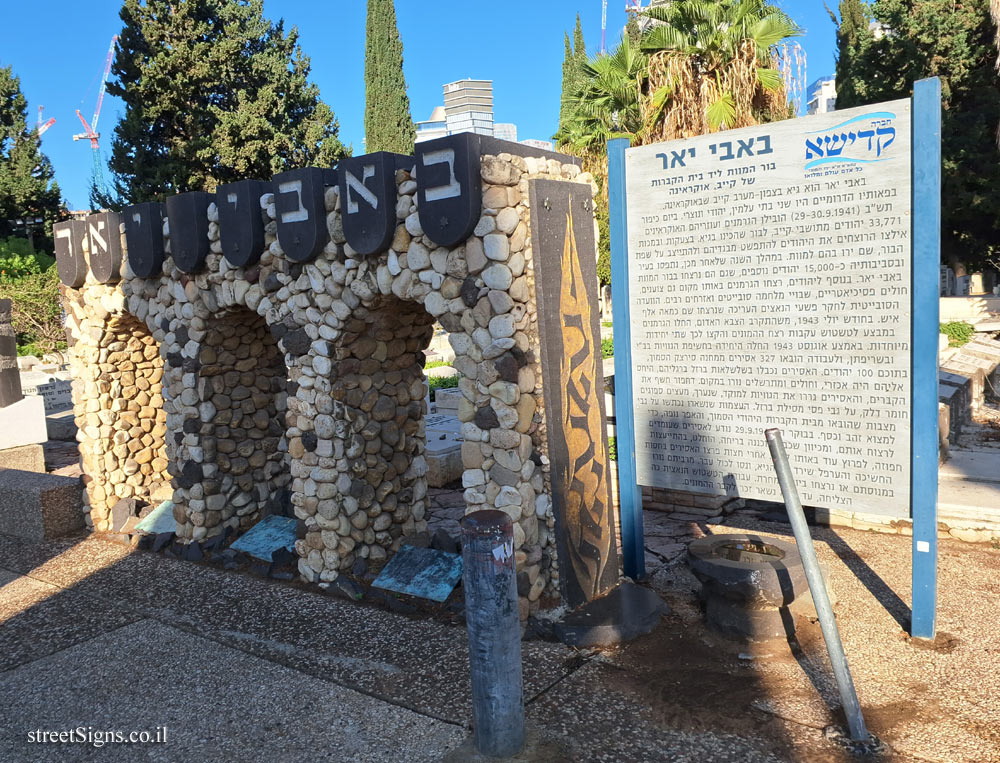Next to the sign is a monument with the words "Babi Yar" and at the bottom memorial plaques to the communities murdered in Babi Yar.
The monument was photographed that day
 Click for a larger image
Click for a larger image  Click for a larger image Translation of the text on the sign
Click for a larger image Translation of the text on the sign:
[Symbol of a Kadisha society, every human being in its entirety]
Babi Yar The death pit near the Kiev cemetery, Ukraine
Babi Yar is a ravine in northwest Kyiv, Ukraine. In its southern suburbs there were two cemeteries, a Jewish and a Christian one. On Yom Kippur 1941 (September 29-30, 1941), the Germans and their Ukrainian helpers led 33,771 Jews from the residents of Kyiv to a pit they had prepared in a ravine. With shouts and blows, the killers forced the Jews to strip of their clothes and stand on the edge of the pit, where they shot them to death. During the following year, they were caught in the city and around it about 15,000 other Jews, who were also murdered in the death pit at Babi Yar. In addition to the Jews, the Germans also murdered Gypsies, psychiatric patients, Soviet prisoners of war and many civilians at the same place. The Soviet Commission for the Investigation of Nazi Crimes estimated that about 100,000 people were murdered there. In July 1943 As the Red Army approached, the Germans began an operation to cover up the traces of the mass murder and assigned two special units. In mid-August 1943, the unit began uncovering the corpses in Babi Yar. The prisoners were chained with iron chains on their legs, their treatment was cruel, and the sick and negligent were shot on the spot. A bulldozer uncovered the graves, and the prisoners dragged the corpses to the fire pit, which was made of trees soaked in fuel, on top of railroad tracks. The remaining bones were crushed on tombstones brought from the nearby Jewish cemetery, and the ashes were sifted to find gold and silver. On the morning of September 29, 1943, the prisoners learned that they were going to be murdered, and since an escape was already planned, it was decided, in a hasty consultation, to break in that night. After midnight, the prisoners broke out under the cover of the darkness and the fog that descended on the ravine, and tried in all directions. Most of them were shot in their escape or murdered the next day. The Nazi obfuscation work was so successful that no trace of the mass grave remained.
Learn about:

 Click for a larger image
Click for a larger image  Click for a larger image
Click for a larger image